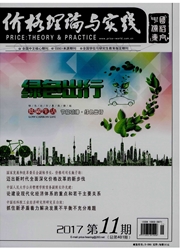

 中文摘要:
中文摘要:
农业标准化是传统农业向现代农业转化的重要方式,是现代农业和农业现代化的重要形式,是农民增收的重要途径,对促进农业可持续发展具有重要意义。在实地调研的基础上总结我国农业标准化发展的四种模式,即粮食生产发展模式、都市型现代农业发展模式、基地发展模式、规模化农场发展模式。在分析各类模式相关内涵、基本特征、主要做法及取得成效的基础上,为其他生产资源相似地区提供一定借鉴。由此得出,我国农业标准化发展已较为成熟,发展模式比较健全,农业标准化通过基地建设将农业产前、产中和产后相互衔接,不仅提高农业综合能力,促进农业增收,还通过质量安全监督体系保证产品质量,通过产业链提升产品市场竞争力和市场价值。但同时农业标准化过程中也存在农民素质相对较低、资金投入不够等问题,需要采取加强人力资源建设,创建多元投融资机制等措施进一步完善农业标准化进程。
 英文摘要:
英文摘要:
Agricultural standardization is an important way through which the shift from traditionalagriculture to modern agricultural can be realized. Based on the survey and empirical analyses, we identifiedfour modes of the development of agricultural standardization, which were grain production developmentmode, modern agriculture development mode, the base mode of development, and large-scale farmdevelopment mode. Based on the basic characteristics, main methods, and the achievements associated witheach of the four modes, we proposed important implications and policy recommendations for regions withsimilar producing resources. We find that the system of agricultural standardization in China has beenmaturely-developed, and the modes of development are well-established. However, issues includingrelatively low quality of farmers and insufficiency of capital input exist. A range of measures such as humanresource development and the build-up of diversified investment and financing system can be applied inorder to improve the development of agricultural standardization.
 同期刊论文项目
同期刊论文项目
 同项目期刊论文
同项目期刊论文
 期刊信息
期刊信息
